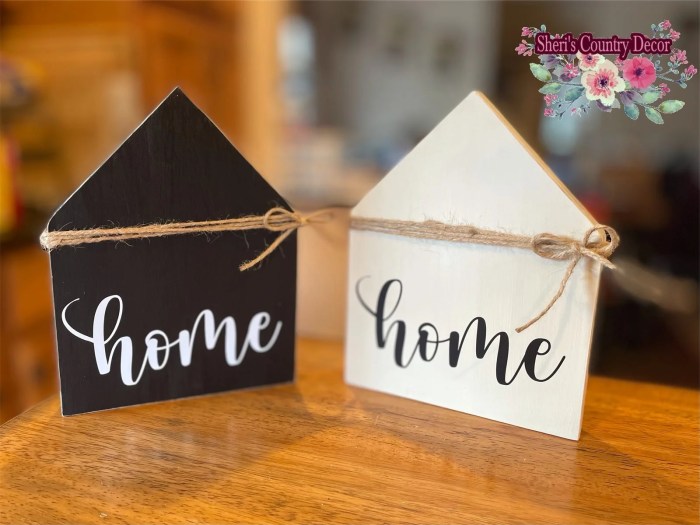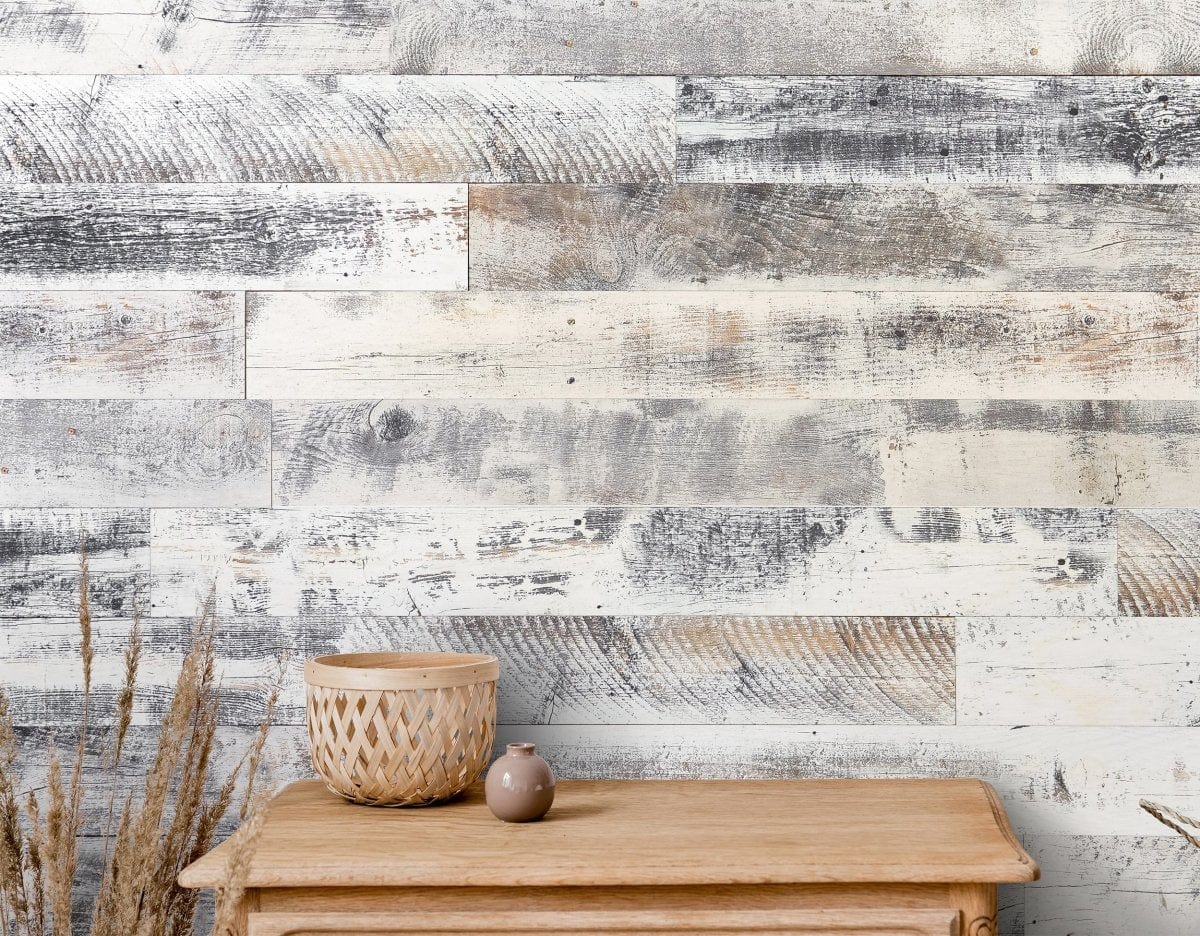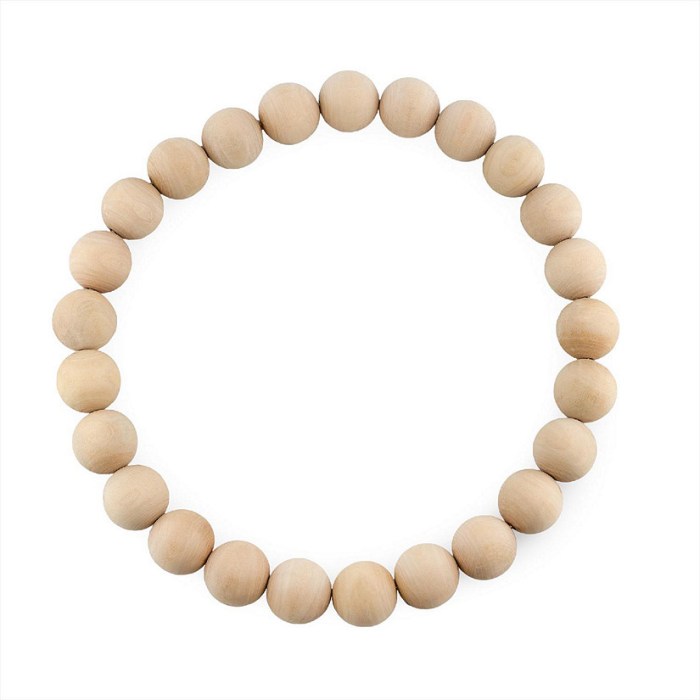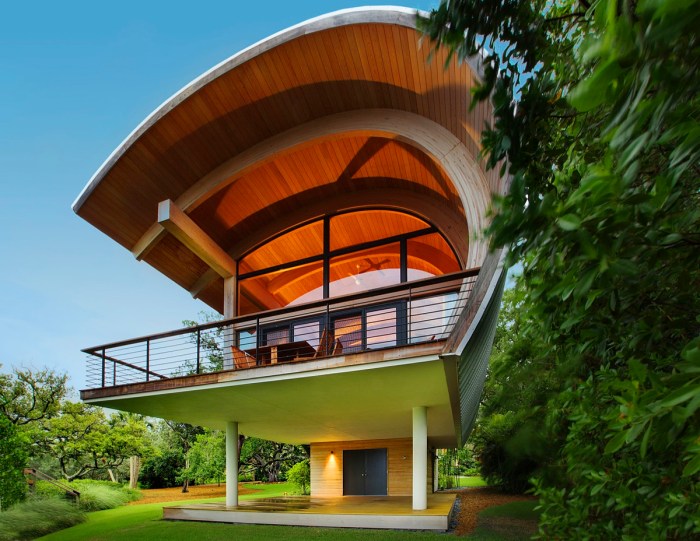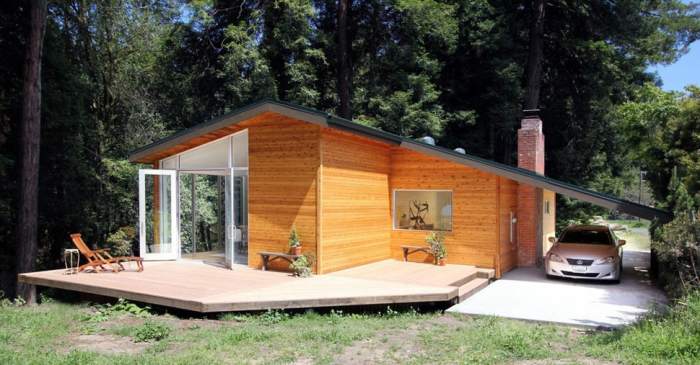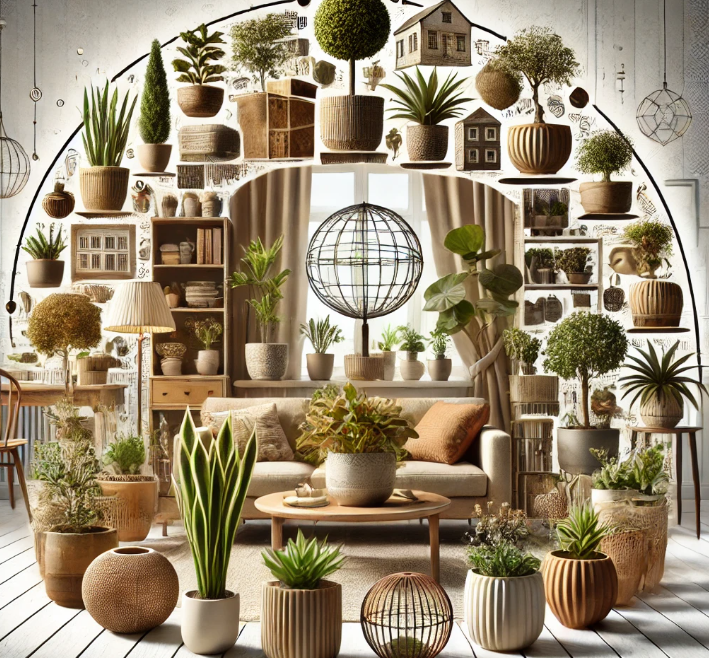The allure of natural materials in outdoor spaces is undeniable. Wood, with its inherent warmth and versatility, offers a unique opportunity to transform patios, gardens, and balconies into havens of style and comfort. From rustic charm to sleek modern aesthetics, the possibilities are as diverse as the wood itself. This exploration delves into the science of wood selection, preservation, and design, guiding you through the creation of enduring and visually stunning outdoor spaces.
We will examine various wood types and their suitability for different climates and applications, considering factors like density, durability, and resistance to decay. Furthermore, we’ll explore practical DIY projects, emphasizing sustainable sourcing and eco-friendly practices. By understanding the principles of design and maintenance, you can create a beautiful and long-lasting outdoor wooden decor that reflects your personal style while respecting the environment.
Types of Outdoor Wooden Decor
Outdoor wooden decor offers a versatile and aesthetically pleasing way to enhance any outdoor space. The choice of style depends heavily on the desired aesthetic, the existing landscape, and the intended function of the decor. Understanding the characteristics of different styles allows for informed decision-making, ensuring the chosen decor complements the environment and fulfills its purpose effectively.
Rustic Wooden Decor
Rustic wooden decor emphasizes natural textures and imperfections. The aesthetic is characterized by the use of reclaimed or weathered wood, often exhibiting knots, cracks, and variations in color. This style frequently incorporates natural elements like bark or moss, further enhancing the raw, organic feel. Examples include rough-hewn benches made from reclaimed lumber, chunky, unevenly shaped planters crafted from old tree stumps, and wall-mounted shelves constructed from aged barn wood.
This style is particularly well-suited for gardens and patios where a natural, somewhat untamed aesthetic is desired. Its durability makes it suitable for various weather conditions, although regular sealing may be necessary to protect against excessive moisture damage.
Modern Wooden Decor
In contrast to rustic styles, modern wooden decor prioritizes clean lines, geometric shapes, and minimalist designs. The wood used is typically smooth, finely finished, and often treated for weather resistance. Examples include sleek, linear benches with integrated seating, geometrically shaped planters with precise cuts, and minimalist birdhouses with sharp angles and simple designs. This style is ideal for contemporary patios or balconies where a sense of order and sophistication is desired.
The smooth surfaces are relatively easy to maintain and resist damage, enhancing their longevity in outdoor settings.
Traditional Wooden Decor
Traditional wooden decor draws inspiration from classic design elements, often incorporating ornate carvings, detailed joinery, and rich, dark wood stains. The materials are usually high-quality hardwoods, carefully selected and meticulously crafted. Examples include intricately carved garden gates, ornate window boxes with decorative detailing, and meticulously crafted trellises supporting climbing plants. This style is well-suited for formal gardens, creating a sense of elegance and timelessness.
While durable, the detailed craftsmanship requires regular maintenance to preserve its appearance and prevent damage from the elements.
Coastal Wooden Decor
Coastal wooden decor evokes a relaxed, beachy atmosphere. The aesthetic typically features light-colored woods, often bleached or whitewashed, combined with nautical accents like rope, shells, and weathered finishes. Examples include driftwood sculptures, simple benches with a distressed whitewash finish, and planters fashioned from repurposed fishing crates. This style is ideally suited for coastal gardens, patios, or balconies, providing a sense of tranquility and seaside charm.
The light-colored woods are generally resistant to fading, but regular cleaning is needed to remove salt and sand.
Tropical Wooden Decor
Tropical wooden decor draws inspiration from lush, exotic environments. The style often incorporates vibrant colors, intricate carvings inspired by tropical flora and fauna, and natural materials such as bamboo and rattan alongside wood. Examples might include intricately carved bird feeders shaped like tropical birds, brightly painted benches with curved lines mimicking natural forms, and planters with decorative carvings inspired by tropical flowers.
This style thrives in tropical or sub-tropical gardens and patios, enhancing the feeling of a vibrant, lush paradise. While the materials themselves may be durable, the bright paint and intricate carvings might require more frequent maintenance to preserve their appearance against the elements.
DIY Wooden Decor Projects
Embarking on DIY wooden decor projects offers a rewarding blend of creativity and practicality. The inherent beauty and versatility of wood, coupled with readily available resources and straightforward techniques, make it an accessible medium for crafting unique and personalized outdoor decorations. This section details three distinct projects, providing comprehensive instructions and tips to achieve professional-looking results without exceeding budgetary constraints.
Understanding the properties of wood – its density, grain, and susceptibility to weathering – is crucial for selecting appropriate materials and ensuring longevity.
Rustic Wooden Planter Box
Constructing a rustic planter box utilizes basic woodworking skills and readily available materials. This project is ideal for beginners, offering a satisfying outcome with minimal effort.
Materials: Untreated pine boards (1×6, approximately 6 feet long – quantity depends on desired dimensions), exterior wood screws, wood glue, exterior-grade wood stain or paint (optional), sandpaper (various grits), measuring tape, saw (hand saw or circular saw), drill with drill bits (appropriate for screws), safety glasses, work gloves.
Step-by-Step Guide:
- Cut the wood: Measure and cut the pine boards to the desired dimensions for the planter box sides and base. For a rectangular box, you will need two identical pairs of side pieces and one base piece. Accurate measurements are crucial for a well-fitting structure. Visualize a rectangular prism; each pair of sides forms one of the long sides of the planter.
The base forms the bottom. Consider adding a small lip (approximately 1 inch) to the top edges of the side pieces for a neater appearance.
- Assemble the box: Apply wood glue to the edges of the boards where they will meet. Pre-drill pilot holes to prevent the wood from splitting when screwing. Then, secure the sides to the base using exterior wood screws, ensuring even spacing and alignment. Use clamps to hold the pieces in place while the glue dries. A properly constructed planter will have strong joints, capable of supporting the weight of soil and plants.
- Sand and finish: Once the glue is completely dry, sand all surfaces of the planter box using sandpaper, starting with coarser grits and moving to finer grits for a smooth finish. Apply a coat of exterior-grade wood stain or paint for protection against the elements and to enhance the aesthetic appeal. Allow ample drying time between coats.
Tips for Professional Results: Use clamps to ensure tight joints during assembly. Pre-drilling pilot holes prevents wood splitting. Applying multiple thin coats of stain or paint yields a more even and durable finish than one thick coat. Choose a stain or paint that complements your existing outdoor decor. Consider adding decorative elements such as rope handles or metal brackets.
Simple Wooden Birdhouse
Building a birdhouse is a delightful project that combines craftsmanship with a contribution to local wildlife. The design should consider local bird species’ preferences for nesting cavities.
Materials: Untreated cedar or redwood (more resistant to decay than pine), wood screws, wood glue, sandpaper, saw, drill, exterior-grade wood sealant or paint, small nails (optional, for added strength), measuring tape, safety glasses, work gloves.
Step-by-Step Guide:
- Cut the wood: Cut the wood according to a simple birdhouse design – a main body, a roof, and a small entrance hole. The dimensions should accommodate the local bird species you want to attract. Consider using a pre-made birdhouse plan to ensure proper dimensions and structural integrity.
- Assemble the birdhouse: Assemble the pieces using wood glue and small nails or screws. The roof should be slightly overhanging to protect the interior from rain. Ensure the entrance hole is the appropriate size for the target bird species, and its location is high enough to prevent predators from easily reaching inside.
- Finish and install: Sand all surfaces smooth. Apply an exterior-grade sealant or paint for weather protection. Install the birdhouse in a suitable location, away from direct sunlight and potential predators, and at a height appropriate for the target bird species.
Tips for Professional Results: Use a sharp saw for clean cuts. Pre-drill pilot holes before screwing to prevent splitting. Choose a sealant or paint that is non-toxic to birds. Consider adding a small perch below the entrance hole. Research local bird species to tailor the design and placement for optimal success.
Decorative Wooden Fence Panel
Creating a decorative wooden fence panel offers a chance to add a personalized touch to your outdoor space, enhancing both aesthetics and privacy. This project allows for creative expression through varied designs and patterns.
Materials: Various sized wooden slats (consider reclaimed wood for a rustic look), wood glue, wood screws, exterior wood stain or paint, sandpaper, saw, drill, safety glasses, work gloves.
Step-by-Step Guide:
- Design and Layout: Plan the design of your fence panel. Consider patterns such as vertical slats, horizontal slats, or a combination of both, perhaps incorporating geometric shapes or curves. Sketch your design on paper before starting to cut the wood. The design should be visually appealing and structurally sound.
- Cut and assemble: Cut the wooden slats to the desired lengths and angles according to your design. Arrange them on a flat surface to check the layout before gluing and screwing them together. Use wood glue to enhance the strength of the joints, and then secure with exterior-grade wood screws.
- Sand and finish: Once the glue is dry, sand all surfaces to achieve a smooth finish. Apply an exterior wood stain or paint to protect the panel from weathering and to enhance its aesthetic appeal. Choose colors and finishes that complement your existing outdoor decor.
Tips for Professional Results: Use a variety of wood types and colors for a visually interesting effect. Consider using reclaimed wood for a rustic look and sustainable approach. Pre-drill pilot holes before screwing to prevent splitting. Apply multiple thin coats of stain or paint for even coverage and better protection. Consider adding decorative elements such as metal accents or carved designs.
Maintaining Outdoor Wooden Decor
The longevity and aesthetic appeal of outdoor wooden decor are significantly impacted by environmental factors. Exposure to sunlight, rain, snow, and insects can cause weathering, decay, and structural damage. Regular maintenance is therefore crucial to preserve the investment and extend the lifespan of these cherished pieces. Understanding the specific needs of different wood types and employing appropriate cleaning and protection methods will ensure your outdoor wooden decor remains beautiful for years to come.
Effective maintenance involves a proactive approach, combining regular cleaning to remove dirt and debris with the application of protective coatings to shield the wood from the elements. This process slows down the natural degradation of wood, preventing cracks, warping, discoloration, and insect infestation. The choice of cleaning and protection methods will depend on the type of wood, the finish (if any), and the level of weathering already present.
Methods for Cleaning and Protecting Wooden Decor
Several methods exist for cleaning and protecting outdoor wooden decor. The selection depends on the wood type, existing finish, and the level of weathering. Effective cleaning removes dirt, mildew, and other contaminants, while protective treatments create a barrier against moisture and UV radiation. Consistent application of these methods will significantly extend the life of your wooden pieces.
| Cleaning Method | Protection Method | Frequency | Benefits |
|---|---|---|---|
| Mild soap and water solution, soft bristle brush. Rinse thoroughly with clean water. For stubborn mildew, a solution of bleach and water (1:10 ratio) can be used, followed by thorough rinsing. Always test any cleaning solution on a hidden area first. | High-quality exterior-grade wood sealant or stain. Choose a product appropriate for the wood type and desired finish (e.g., semi-transparent, solid). Apply according to manufacturer’s instructions. | Twice yearly (spring and fall) | Removes dirt, mildew, and surface contaminants; prevents water damage and UV degradation; enhances the natural beauty of the wood. |
| Pressure washing (low pressure setting). Use caution to avoid damaging the wood’s surface. Follow with a thorough rinsing. | Linseed oil or tung oil (for unfinished wood). These oils penetrate the wood, providing moisture and protection against weathering. | Annually, or as needed. | Effectively removes embedded dirt and grime; provides deep penetration for moisture and UV protection. |
| Soft cloth and wood cleaner specifically designed for outdoor use. | UV-resistant varnish or polyurethane. These create a durable protective layer that resists scratching and chipping. | Every 2-3 years, depending on the product and level of sun exposure. | Gentle cleaning for regularly maintained pieces; provides a long-lasting, hard-wearing finish. |
Creative Wooden Decor Ideas
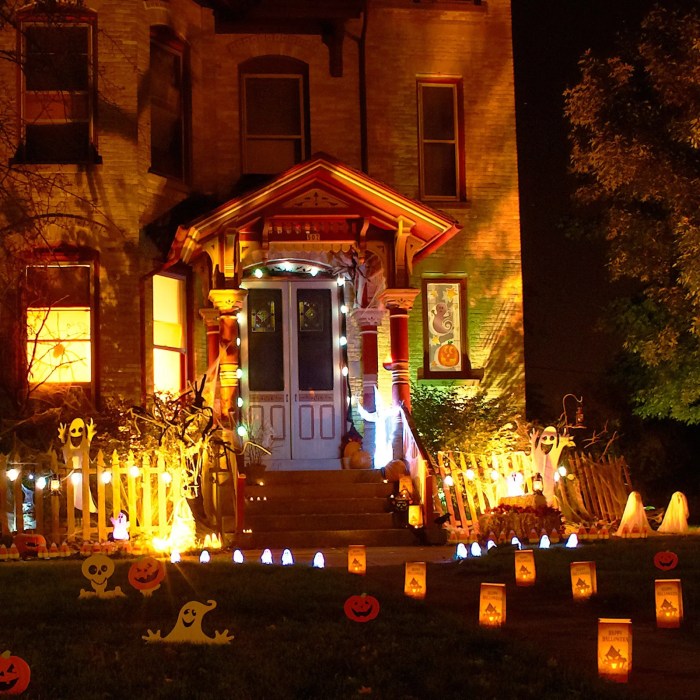
The inherent beauty and versatility of wood lend themselves to a multitude of creative outdoor decor applications. By understanding the properties of different wood types and employing appropriate techniques, one can craft unique pieces that enhance any outdoor space, from rustic gardens to modern patios. The following examples showcase the potential for transforming simple wooden elements into visually striking and functional decorations.
Vertical Planter Wall
This design utilizes reclaimed wood planks of varying widths and lengths to create a visually interesting vertical planter wall. The planks, ideally treated for outdoor use to resist rot and insect damage, are arranged in a staggered pattern, leaving gaps between them for planting. Different plant species with contrasting textures and colors—such as trailing ivy, succulents, and brightly colored flowers—can be planted to maximize visual appeal.
The overall aesthetic is one of rustic charm, enhanced by the natural variations in wood grain and color. The materials needed include reclaimed wood planks, screws, outdoor-rated sealant, and soil. The technique involves careful measurement and precise screwing of the planks to a supporting structure, ensuring stability and water drainage. The natural texture of the wood is preserved, and the color palette can be enhanced with a natural wood stain to further emphasize the rustic feel.
Rustic Wooden Birdhouse
This project involves crafting a birdhouse from rough-hewn cedar wood, a naturally durable and weather-resistant species. The birdhouse design can be simple or intricate, reflecting personal preference. A rustic aesthetic can be achieved by leaving some of the natural bark on the wood or by using a natural wood finish that highlights the grain. The birdhouse should have a sizeable entrance hole appropriate for the intended bird species and a sloped roof to prevent water accumulation.
Materials include cedar wood planks, screws, sandpaper, and a weather-resistant sealant. The techniques involve precise cutting and shaping of the wood, ensuring a snug fit for the various components. The rough texture of the cedar wood contributes to the rustic charm, while a natural stain or clear sealant preserves the wood’s natural color and protects it from the elements.
Wooden Pallet Seating
Repurposed wooden pallets can be transformed into comfortable and stylish outdoor seating. Several pallets can be stacked and secured together to create a bench or even a small sofa. The pallets can be sanded smooth, painted, or left in their natural state, depending on the desired aesthetic. Adding comfortable cushions further enhances the seating’s functionality and visual appeal.
Materials include used wooden pallets, screws, sandpaper, paint or stain (optional), and outdoor cushions. The techniques involve careful disassembly and reassembly of the pallets, ensuring stability and safety. The texture can be altered by sanding, and the color can be customized with paint or stain, offering versatility in design.
Decorative Wooden Fence
A decorative wooden fence can enhance the privacy and aesthetic appeal of an outdoor space. Instead of a simple fence, consider incorporating decorative elements like latticework, carved designs, or varying plank widths and heights. Different wood types can be used to create visual interest, perhaps using a darker wood for the posts and a lighter wood for the infill.
Materials include various types of treated lumber, screws, and possibly specialized carving tools if intricate designs are desired. The techniques involve precise cutting and joining of the wood pieces, ensuring a sturdy and visually appealing fence. The texture and color can be varied by using different wood types and applying different finishes.
Mosaic Stepping Stones
Create unique stepping stones for a garden path by embedding colorful glass or ceramic pieces into concrete molds shaped from wooden forms. The wooden forms themselves can be simple or intricately shaped, adding to the overall design. Once the concrete sets, the wooden forms are removed, leaving behind beautiful, personalized stepping stones. Materials include wooden molds, concrete mix, colored glass or ceramic pieces, and sealant.
The techniques involve creating the wooden molds, carefully mixing and pouring the concrete, embedding the mosaic pieces, and sealing the finished stones. The overall texture is a combination of the smooth concrete and the varied textures of the embedded mosaic pieces. The color palette is determined by the chosen glass or ceramic pieces, offering a wide range of design possibilities.
Incorporating Wooden Decor into Different Outdoor Settings
The strategic integration of wooden decor significantly impacts the overall aesthetic and ambiance of any outdoor space. The inherent warmth and natural beauty of wood offer versatile design possibilities, complementing various architectural styles and personal preferences. Understanding the principles of design balance—achieving visual harmony through the careful arrangement of elements—is crucial for creating a cohesive and inviting outdoor environment.
This involves considering factors like scale, proportion, color, and texture to ensure the wooden decor enhances, rather than overwhelms, the existing space.
Wooden Decor in a Modern Minimalist Patio
Modern minimalist design emphasizes clean lines, simplicity, and functionality. To successfully incorporate wooden decor into this setting, it’s essential to select pieces that maintain this aesthetic. Overly ornate or rustic elements would clash with the minimalist ethos. Instead, consider sleek, geometrically shaped wooden planters for succulents or herbs, a low, rectangular wooden coffee table with a smooth, polished finish, and perhaps a set of minimalist wooden chairs with a light stain or natural finish.
The color palette should remain neutral, with shades of gray, white, or beige complementing the natural tones of the wood. The key is to use wood as an accent, introducing natural texture without disrupting the overall sense of order and simplicity. Imagine a patio with light-grey concrete paving, featuring a single, large, rectangular wooden planter holding a vibrant collection of succulents, perfectly positioned to complement the clean lines of the space.
Wooden Decor in a Rustic Garden
A rustic garden thrives on a sense of natural charm and aged beauty. Here, the use of wood can be more extensive and less constrained by minimalist principles. Consider incorporating weathered wooden fences, trellises adorned with climbing plants, and perhaps a charming wooden birdhouse. Larger, more rustic pieces like a chunky wooden bench or a weathered picnic table would fit seamlessly.
The textures should be varied, incorporating rough-hewn wood alongside smoother, more polished elements. The color palette can be richer, with warm browns, deep reds, and even hints of grey from weathered wood adding depth and character. A key element is to embrace the natural aging process of wood; imperfections and signs of wear contribute to the overall rustic appeal.
Picture a garden path bordered by a rustic wooden fence, with a weathered wooden bench nestled beneath a sprawling oak tree, creating a picturesque and inviting seating area.
Wooden Decor in a Cozy Balcony
A cozy balcony aims for a sense of intimacy and warmth. Wooden decor plays a vital role in achieving this atmosphere. Smaller-scale wooden elements are ideal, such as a small, intricately carved wooden side table, a set of comfortable wooden chairs with cushions, and perhaps a few strategically placed wooden planters filled with fragrant flowers. Consider using warmer wood tones, such as honey-colored oak or rich cherry, to enhance the feeling of coziness.
Textural elements, such as a woven wooden basket or a small wooden stool with a slightly distressed finish, can add further character. Soft lighting, such as string lights woven through a wooden trellis, can enhance the ambiance. Imagine a small balcony with a wrought-iron railing, adorned with climbing ivy and a set of two charming wooden chairs with plush cushions, a small wooden side table holding a vase of vibrant flowers, creating a perfect spot for relaxation and quiet contemplation.
Sustainable and Eco-Friendly Options
Creating outdoor wooden decor with an eye towards environmental sustainability is crucial. The choices we make in sourcing materials directly impact the health of our forests and the planet. By prioritizing sustainable options, we can enjoy beautiful, long-lasting decor while minimizing our ecological footprint. This section explores three key approaches to responsible wood sourcing for outdoor projects.Choosing sustainable wood sources significantly reduces the environmental impact of outdoor decor projects.
Sustainable forestry practices, unlike unsustainable logging, maintain forest health and biodiversity, ensuring the long-term availability of this valuable resource. Reclaimed wood offers a unique opportunity to repurpose existing materials, reducing landfill waste and lowering the demand for newly harvested timber. These practices contribute to carbon sequestration, mitigating climate change, and supporting local economies.
Sustainable Forestry Certified Wood
Sustainable forestry certification, such as the Forest Stewardship Council (FSC) certification, guarantees that the wood originates from forests managed according to rigorous environmental and social standards. These standards promote biodiversity conservation, protect endangered species, and ensure responsible forest management practices that maintain forest health and productivity for future generations. FSC-certified wood provides a traceable and transparent supply chain, allowing consumers to make informed choices and support responsible forestry.
For example, a picnic table crafted from FSC-certified redwood would not only be aesthetically pleasing but also carry the assurance of environmentally sound sourcing. The certification process involves rigorous audits and inspections to verify compliance with the standards, offering a high level of assurance to consumers.
Reclaimed Wood
Reclaimed wood, sourced from demolished structures, old barns, or discarded pallets, offers a unique character and charm. Using reclaimed wood significantly reduces the demand for newly harvested timber, minimizing deforestation and habitat loss. The carbon footprint of reclaimed wood is considerably lower compared to newly harvested wood, as the carbon already absorbed during the wood’s initial growth is not released back into the atmosphere.
For instance, using reclaimed barn wood for a fence reduces the pressure on forests and contributes to a circular economy. However, it’s important to carefully inspect reclaimed wood for signs of pest infestation or decay before incorporating it into a project.
Bamboo
Bamboo is a rapidly renewable resource, offering a sustainable alternative to traditional hardwoods. It grows incredibly fast, often reaching maturity in just three to five years, compared to decades for many tree species. This rapid growth rate allows for sustainable harvesting without depleting the resource. Bamboo is also incredibly strong and durable, making it suitable for a wide range of outdoor decor applications.
Furthermore, bamboo cultivation can help prevent soil erosion and improve biodiversity in certain regions. A stylish garden bench made from bamboo would exemplify the use of this rapidly renewable and environmentally friendly material. However, considerations regarding the processing and treatment of bamboo for outdoor use to ensure its longevity and resistance to pests and weather should be taken into account.
Advanced Techniques for Wooden Decor
Creating truly unique and intricate outdoor wooden decor requires mastering advanced techniques that go beyond simple painting or staining. These techniques allow for the expression of complex designs and the creation of pieces with exceptional visual depth and texture. The following explores three such methods: wood carving, pyrography, and advanced painting techniques.
Wood Carving
Wood carving, a time-honored craft, involves meticulously removing wood to create three-dimensional designs. The depth and intricacy achievable are limited only by the carver’s skill and the chosen wood’s properties. Hardwoods like oak and mahogany, with their tight grain and durability, are preferred for detailed work, while softer woods like basswood are easier to carve for beginners.
Step-by-step process:
- Design Transfer: Begin by sketching your design onto paper. Then, carefully transfer the design onto the wood surface using tracing paper and carbon paper, or by directly sketching with a pencil.
- Rough Carving: Employ larger gouges and chisels to remove significant amounts of wood, shaping the overall form of your design. This stage focuses on establishing the basic Artikels and removing excess material.
- Detail Carving: Use smaller, more specialized tools like V-tools, U-gouges, and parting tools to refine the details. This requires patience and precision, gradually shaping the finer aspects of the design.
- Finishing: Once the carving is complete, sand the wood to smooth out any rough edges and imperfections. Apply a suitable finish, such as oil or varnish, to protect the wood and enhance its natural beauty. This will also highlight the intricate details of the carving.
Example Project: A highly detailed carving of a bird perched on a branch, with feathers meticulously rendered, could be created using this technique. The intricate detail would be best achieved with a hard wood like cherry and a variety of carving tools.
Pyrography
Pyrography, also known as wood burning, uses a heated stylus to etch designs onto wood. This technique allows for fine detail and the creation of shaded areas, providing a unique aesthetic. Different stylus tips allow for variations in line width and shading effects, creating diverse textures and depth. The choice of wood also affects the final result; lighter woods show the burn marks more clearly.
Step-by-step process:
- Design Preparation: Similar to carving, begin with a design transferred onto the wood surface. A light pencil sketch is sufficient, as the burn marks will be the primary visual element.
- Burn Mark Application: Using a pyrography tool, carefully trace the design lines. Vary the pressure and speed of the stylus to create different shades and line thicknesses. Lighter pressure produces finer lines, while heavier pressure creates darker, bolder marks.
- Shading and Detailing: Experiment with different stylus tips to create shading and depth within the design. Hatching and cross-hatching techniques can be used to build up darker areas and add texture.
- Finishing: After completing the burning, lightly sand any overly charred areas. A protective finish, such as a clear coat, is optional but recommended to protect the wood and enhance the burned design’s longevity.
Example Project: A decorative wooden sign with a stylized floral pattern, incorporating varying shades and textures through controlled burning, would showcase the capabilities of pyrography. The contrast of the burned areas against the natural wood grain would be visually striking.
Advanced Painting Techniques
Beyond basic painting, advanced techniques like layering, glazing, and dry brushing can create depth and realism in wooden decor. These techniques mimic natural textures and weathering, adding sophistication to the finished piece.
Step-by-step process (Layering Example):
- Base Coat: Apply a base coat of paint that serves as the foundation for subsequent layers. This could be a neutral color or a color that complements the final design.
- Mid-tone Layers: Apply several layers of progressively darker or lighter colors, allowing each layer to partially dry before applying the next. This creates depth and dimension.
- Highlighting and Shadowing: Use lighter colors to highlight raised areas and darker colors to create shadows and depth. This can mimic the natural light and shadow play on a wooden object.
- Finishing: Once all layers are dry, apply a clear coat sealant to protect the paint job and enhance its longevity. This will also help to prevent chipping and fading.
Example Project: A wooden birdhouse painted to realistically depict weathered wood, using a variety of layered colors and techniques to simulate cracks and textures, would be an example of advanced painting in action. The layering would create a three-dimensional effect, making the birdhouse appear more realistic and weathered.
Conclusion
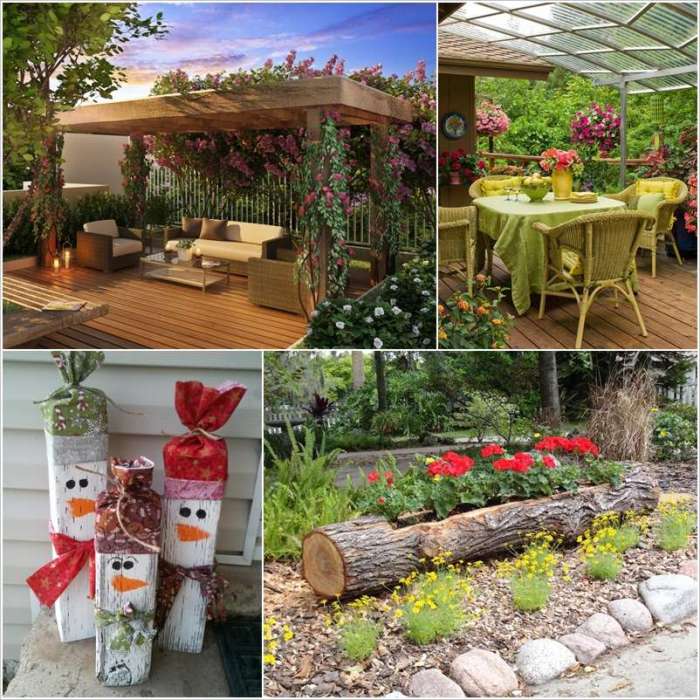
Transforming outdoor spaces with wooden decor is a rewarding journey that blends creativity with scientific understanding. By carefully considering the type of wood, design elements, and maintenance techniques, you can craft a unique and enduring aesthetic. Remember that responsible sourcing and regular care are key to maximizing the lifespan and beauty of your wooden creations. Whether embracing rustic charm or modern minimalism, the result is an outdoor environment that is both aesthetically pleasing and environmentally conscious.
Let your imagination take flight and create an outdoor oasis that reflects your unique style.
FAQ
What types of wood are best for outdoor use?
Hardwoods like cedar, redwood, and teak are naturally resistant to rot and insects, making them ideal for outdoor applications. Pressure-treated softwoods offer a more budget-friendly alternative with enhanced durability.
How often should I clean my outdoor wooden decor?
Cleaning frequency depends on your climate and the level of exposure to the elements. Generally, cleaning every 3-6 months with a mild soap and water solution is recommended. More frequent cleaning may be necessary in harsh environments.
What are some eco-friendly wood finishes?
Linseed oil, tung oil, and natural varnish are eco-friendly alternatives to synthetic finishes. These options provide protection while minimizing environmental impact.
Can I paint or stain reclaimed wood?
Yes, reclaimed wood can be painted or stained, but it’s important to prepare the surface properly by cleaning and sanding to ensure proper adhesion. Priming may also be necessary depending on the wood’s condition.
How can I prevent wood rot?
Proper sealing and regular cleaning are crucial. Ensure good air circulation to prevent moisture buildup, and consider using a wood preservative to protect against fungal growth.
